THE WAR ON SPIDERS
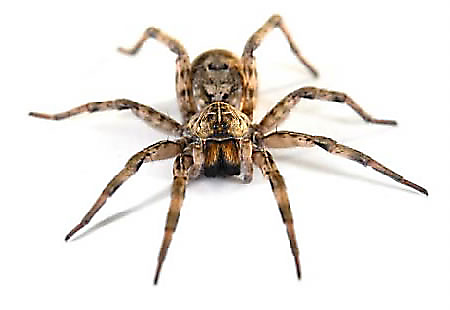
Every winter as the temperature drops, various pests start looking for a cozy new place to call home. Many of us have started to view these seasonal home invasions as an unavoidable reality. We are here to tell you it’s time to take back control of your home and kick these pesky pests to the curb!
As the old adage goes, “The best defense is a great offense.” It applies to protecting your home from the multitude of creepy-crawlies as well! Isn’t it better to confront the issue before it becomes a problem?
1. Know Thy Enemy

The ancient and wise Sun Tzu said in his book, The Art of War, “If you know yourself and not your enemy you will lose. If you know yourself, and your enemy, you will win every fight!”
That said, however, I wouldn’t expect you to go out and become an arachnologist just to be able to carry on the struggle to free mankind from this eight-legged menace. Still, there are some quick and easy things you can learn that will assist you in this war.
With over 40,000+ species of spiders, it can seem overwhelming to know where they might be lurking. Fear not, brave warriors! Spiders will, in general, follow one of three distinct hunting strategies. Understanding how they get their food will help you find where to put an end to this annual onslaught:
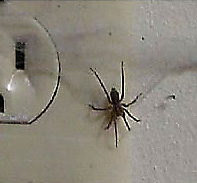
Cobwebs
This is the classic image most of us have of spiders. The spiraling strands of silk covering windows and corners of homes are used to ensnare unsuspecting bugs. Arachnids using this tactic won’t stray far from their webs, but when disturbed, they will abandon ship; descending on a single thread to get to the floor in order to flee retribution.
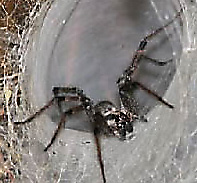
Funnel Webs
These are small tunnel-like shapes made of webbing, which our multi-eyed foes use to ambush passing bugs. They make their homes near high-traffic bug areas and tend to be on the ground level. You will always find the spider hidden deep within this protective fort, and they can be surprisingly resilient to shoe-squishing maneuvers.
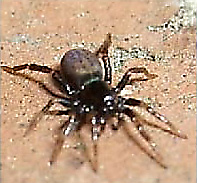
Ground Hunters
The last type of spider hunting tactic used is a classic for the animal kingdom: go out and get the food yourself! These spiders run and scurry around looking for a meal, and only build webs in order to protect themselves while they sleep. Their homes are similar to funnel webs, but are built far away from any threats. These spiders commonly stray from their bases, which makes finding where they are, quite difficult, since they’re more than happy to find the deepest nook or cranny in which to hide while resting.
Remember:
home is where the heart is, and in a spider’s case, it’s usually where the hundreds of babies they just had live as well! Before they reinforce their numbers and chase us from our homes, let’s use what we learned about their hunting habits to bring this fight to an end.
2. Edge to Edge: The Household Perimeter
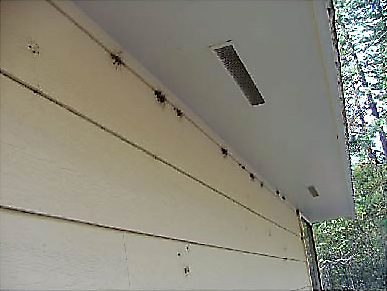
Observation is the key to success when scouting the borders of your home in order to find from where the spider threat is coming. The edge of the foundation is a common area for all spiders to build their webs against. After all, why build a glorious spiraling web high in the trees to catch bugs when you can simply build a lean-to that’s just as effective? Common areas to look include:
Corners: Nature is inherently lazy. If there is an edge created by the walls of your home, this is the first place you should look for high-flying spiders and their cobwebs.
Dryer Vents: A commonly overlooked area, if the seal of your vents isn’t perfect, it can make an easy-access entrance for bugs and spiders to enter your home.
Vegetation: Plants around the edge of your home provide a highway for insects, and are prime hunting grounds for arachnids. The key here is to create a solid border between your home and your lawn, either through good ol’ fashioned yard work, or through the application of chemicals.
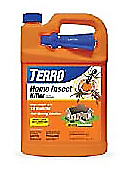
After you've gotten a good lay of the land, start by using a perimeter spray to establish a sort of demilitarized zone for insects and spiders. Treating the perimeter will prevent spiders and other bugs from getting indoors, making your house a nicer place to live.
3. Window Pain
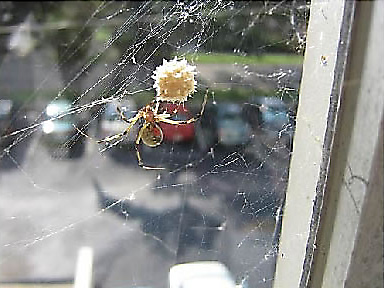
Undoubtedly this is the number one place where we see insects and spiders breaking in. Go around any building and you’ll see the same thing: cobwebs in window corners.
Windows easily lose their seals over time. Weather and temperature together will warp the wooden structure around windows, creating tiny avenues through which bugs can break in. In an odd way, when you see a web in your window, it means the spider is actually acting as a sort of house guardian, eating the insects that are otherwise gaining free entrance.

So while we can appreciate the effort they’re putting into keeping your home clear, why don’t we just do it ourselves? The best solution here would be to fix your window frame. If, however, you’re in a pinch, using an aerosol spray can be a great, and cost effective, way to make a barrier around windows.
4. The Watering Hole
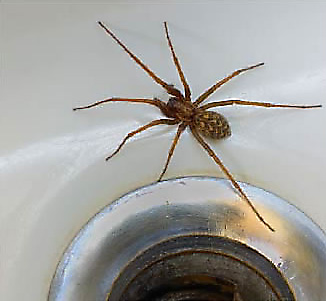
Most of us can relate. If you had to choose a place to live, you’d pick a place near water. We all need water, so why not live near it, so you don’t have to hike to it every day?
Likewise, insects will look for any standing pools of water around which to build their own tiny communities. The two most common areas we’ll find water pooling up are:
Water Drains: We sadly can’t do a lot about water pooling up near an outside drain (after all, that is kind of its job), but it gives an easy target to create some perimeters while we establish our boundaries with insecticides.
Air Conditioners: The air conditioner is less common, and usually means a pipe is condensing the moisture in the air, due to how cold it is. If it is leaking, though, be sure to call a technician!
In most cases, water building up is out of our control, but it can very easily become a place for us to create traps. We can turn an insect’s paradise into their last oasis!
5. Overcoming the Spider-pocalypse
In our society, arachnophobia has become a common word, and without a doubt each of us know at least one person, who, when confronted with a spider, can do nothing but flee in terror. Serious research has been done to help people overcome their fears so they can live their lives anxiety-free, but sometimes we just need to take steps to prevent these situations from occurring in the first place.
Taking control is the number one way to prevent fear from ruling your life. A great first step to taking control is creating an arsenal of anti-pest strategies and products.
TERRO® is here to help you overcome any insect invasion, spider sabotage or bug battle!
Not Yet Satisfied?
- Learn more about Spiders in our Insect Library
- Continue to our Spider Control Products »
